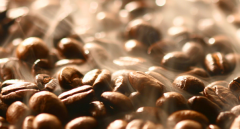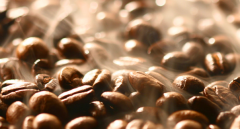How to become a boutique coffee bean how to choose a boutique coffee bean?

When this bean has--good variety, planted in the most fertile area of aromatic spirits, and carefully cared for by coffee farmers, it thrives and bears fruit. BUT! Not all red fruits can become a fine coffee bean!
Today we will talk about what kind of experience this magical fruit has to go through to become a fine coffee!
First of all, it must be ripe red fruit, if coffee farmers in order to save trouble, regardless of the ripeness of coffee fruit, picked together. The coffee thus produced is sour and astringent, because unripe coffee beans contain high concentrations of citric acid and chlorogenic acid.
It is like eating fruit, if it is not ripe, it must taste sour. When ripe, the organic acids in the fruit are converted into sugar, and the taste is sweet and delicious. Coffee fruit is also the same reason, mature coffee red fruit, pulp and parchment contained in the sugar completely penetrated into the beans, greatly increased the coffee bean flavor and fruity. The sweetness is also higher, and the sour taste is not obvious.
After the coffee fruit is picked back, it cannot be delayed for a moment. It must be sent to the processing plant for a new round of coffee bean culling on the same day. The simplest and most effective method is to pour all the fruits into a large tank. The ripe red fruits and the fruits that are about to mature are heavier and sink to the bottom of the tank, while the small fruits that are not fully developed and the fruits that are too ripe, the rotten fruits, the branches and leaves, etc., will float on the surface of the water.
After such a screening, the beans in the sink, that is, the better beans, will enter the next stage of treatment, that is, sun, washing and other treatment methods. (Want to know more about treatment? Reply to coffee beans to view.) As for which method to adopt, it depends on the local climatic conditions. If the climate is dry and water is scarce, solarization or semi-solarization will be used. If the producing area is rich in water and the climate is humid and moldy, it is more suitable for washing or semi-washing.
This magical red fruit can be divided from the outside to the inside: peel, pulp, pectin layer, parchment, silver skin and coffee beans. The so-called sun, washing and other treatment methods, is to remove the peel pulp and pectin layer of coffee fruit together, take out the pods wrapped in coffee, and then dry and mature to stabilize the beans. Then grind off the parchment before you export it.
This seemingly simple step was actually the most difficult. Because parchment attached to a layer of transparent pectin, it is rich in fructose, glucose and sucrose. And viscosity is very strong, not easily soluble in water. It is easy to decay during fermentation and release a pungent smell, contaminating the coffee beans inside the parchment.
The key to picking the beans is the importance of fine coffee. If it is handled properly, the flavor of the coffee beans will be perfectly preserved in this bean. If there is negligence, the best red fruit will turn into rotten beans.
It seems that no matter whether you are a person or a bean, you need experience to become a high-quality product!
Important Notice :
前街咖啡 FrontStreet Coffee has moved to new addredd:
FrontStreet Coffee Address: 315,Donghua East Road,GuangZhou
Tel:020 38364473
- Prev

How do you classify coffee beans? What kind of coffee beans are good? What kind of coffee beans are of good quality?
Small round beans in coffee beans: there are usually two seeds in a coffee fruit, but after picking, there is usually only one seed in about 5-10% of the berries, because only one ovule was fertilized in the ovary. When this bean grows, it will be close to an oval shape, which is commonly known as the small round bean. This coffee bean will be smaller than normal Arabica coffee beans.
- Next

Teach you how to select coffee beans, how to choose coffee beans? How to choose coffee beans? What kind of coffee?
Among the countless legends of coffee discovery, are there two great legends that are the most enjoyable? Is that the Story of the Shepherd and the Arab Monk? The former is the Christian discovery theory, and the latter is the Islamic theory. There are many legends about the discovery of coffee, among which there is a widely circulated saying, "the Story of the Shepherd": around the fifth century AD, on the Ethiopian plateau, there was a man named Carl.
Related
- Guji coffee producing area of Guji, Ethiopia: Humbela, Shakiso, Wulaga
- What is the most expensive variety of Qiloso in BOP multi-variety group?
- How to store the coffee beans bought home?
- Why are Yemeni coffee beans so rare now?
- Ethiopian Sidamo all Red Fruit Sun Sun Santa Vini Coffee beans
- SOE is mostly sour? What does it mean? Is it a single bean? what's the difference between it and Italian blending?
- Is Italian coffee beans suitable for making hand-brewed coffee?
- How to choose coffee beans when making cold coffee? What kind of coffee beans are suitable for making cold coffee?
- Just entered the pit to make coffee, what kind of coffee beans should be chosen?
- Can only Japan buy real Blue Mountain Coffee? What are authentic Jamaican Blue Mountain coffee beans?

